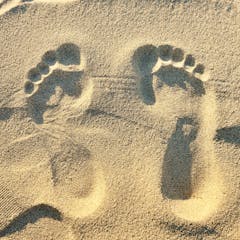
Articles on Sea Turtles
Displaying 1 - 20 of 42 articles

More than half of the world’s turtle species are endangered or threatened, and overhunting of wild species is a major cause.

Environmental DNA provides a wealth of information for conservationists, archaeologists and forensic scientists. But the unintentional pickup of human genetic information raises ethical questions.

Leatherback turtles are predicted to lose half of their nesting habitat, on one beach studied.

Scientists are predicting a record sargassum bloom in 2023. It’s already starting to wash up on beaches in Florida and the Caribbean and cause a stink.

Pam Longobardi collects and documents ocean plastic waste and transforms it into public art and photography. Her work makes statements about consumption, globalism and conservation.

If environmental harm wrought by the port cannot be addressed, the project should not be allowed to proceed.

To fish the oceans sustainably, nations must reduce bycatch, or accidental catches. But fishermen often resist changing gear or techniques that kill nontargeted species.

Artificial lighting from cities illuminates coastal waters and can change the physiology and behaviour of marine organisms.

Standard marine protected areas with fixed boundaries can’t effectively shelter these ocean nomads.

Scientists don’t know what prompts turtle hatchlings to emerge from their nests and head for the water, but vibrations appear to play a role.

Floodwater carries dense clouds of sediment, choking the lush seagrass meadows on which these gentle grazers rely.

New Zealand has no mandatory measures to prevent the bycatch of turtles. This is in stark contrast to Hawai'i, which has reduced its turtle bycatch by 90% using various mitigation measures.

Protecting green turtles is difficult because they perform some of the longest migrations known in the animal kingdom.

Sea turtles of Aldabra were almost hunted to extinction. But thanks to years of protection the much-loved animals are now thriving again - and so is the iconic giant tortoise.

Traditional ecological and cultural wisdom was embraced and valued, enhancing Western scientific knowledge of a beautiful, fragile marine area.

For the endangered Kemp’s ridley sea turtle, every individual matters. A team of veterinarians and biologists has formed a network along the Gulf Coast to save injured sea turtles and the species.

Technology that can identify stray bits of genetic material in the environment can help scientists monitor human and animal health.

Though often seen as placid, turtles have been depicted as powerful, fighting animals since ancient times. One of the most famous battleships, the Korean Geobukseon, was called the ‘Turtle Ship’.

All the fluids in our bodies have a little bit of salt in them.

A new study reports that baby Florida sea turtles are consuming large quantities of plastic waste during a critical early life stage at sea.
